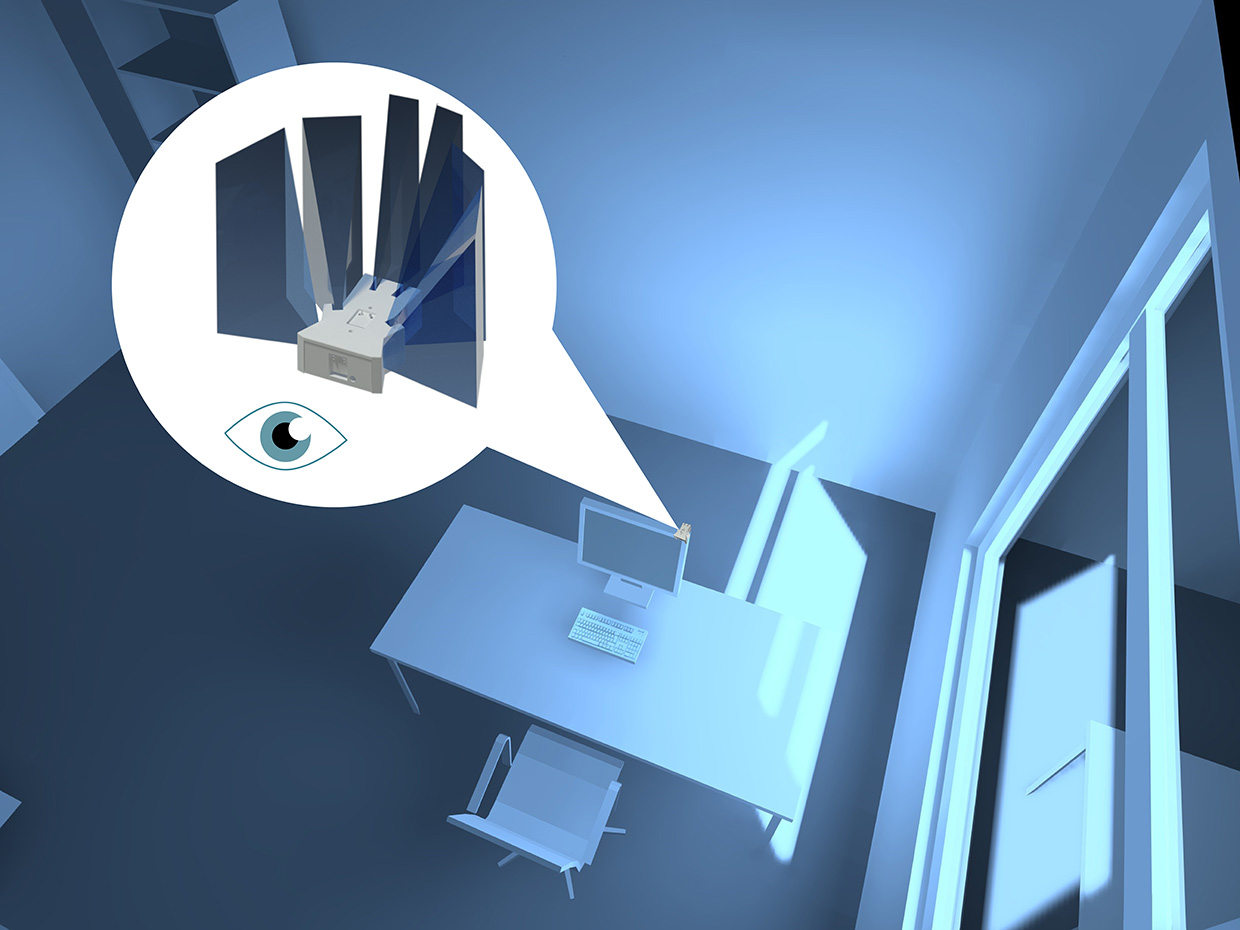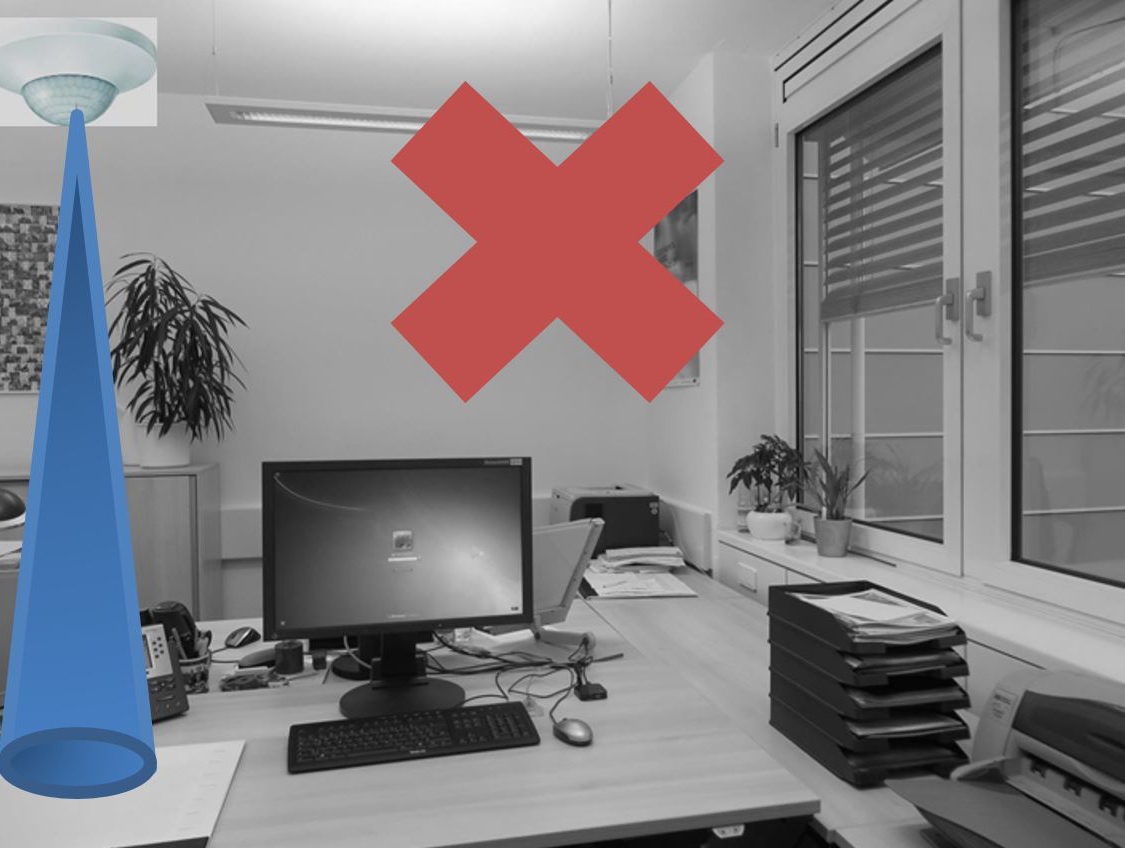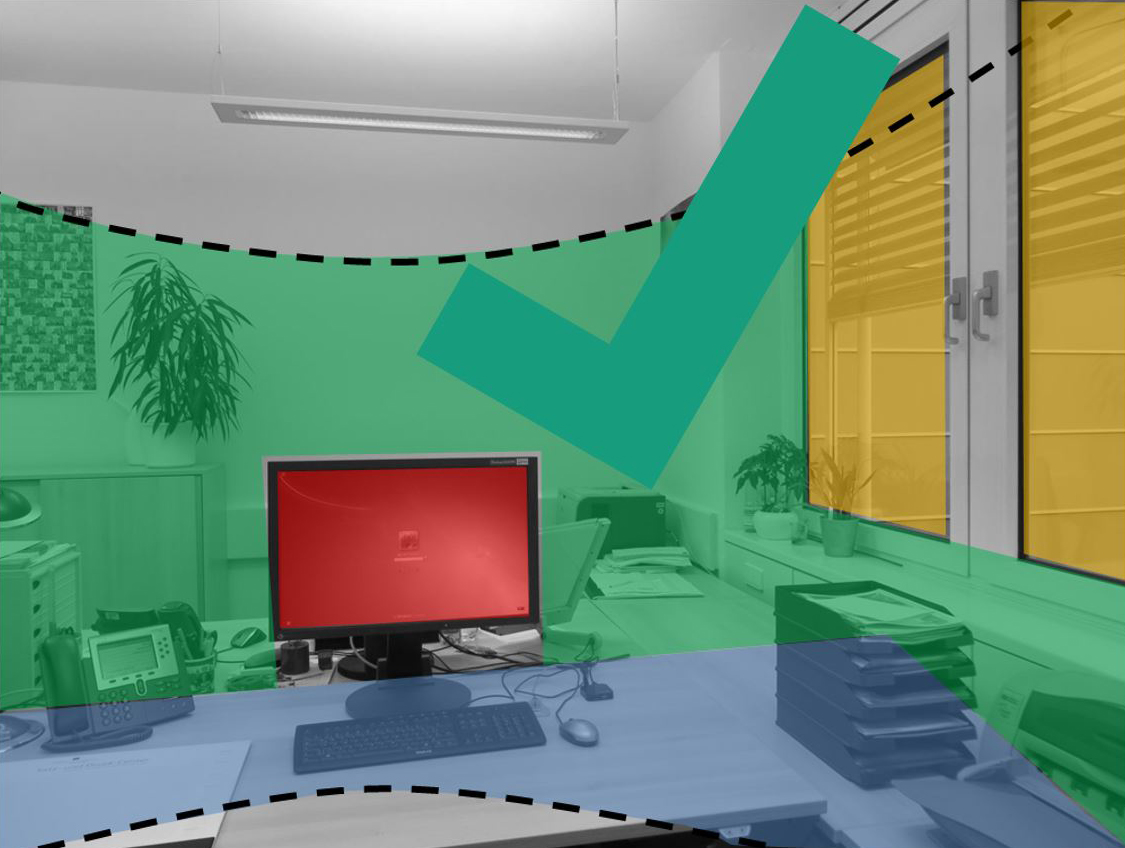Today’s conventional lighting control systems do not measure and control the relevant parameters but only horizontal illuminance, e.g. on floors or desktops. However, the human eye mainly detects objects (when standing and sitting) in the horizontal plane, which makes the vertical field of vision crucial to user comfort. The factors determining this are the luminance ratios, i.e. contrasts in the surroundings and on the screen, and glare from the façade. One study (C. Moosmann, 2015) shows that anti-glare systems are mainly utilized to control daylight and hardly at all to control the indoor temperature, which has disastrous consequences as far as the use of energy is concerned. Human Centric Lighting Control “HCL-Con” addresses this issue with a new approach.
Human Centric Lighting Control “HCL-Con” - Concept for glare-oriented control of daylight and artificial lighting
Project goals
The aim of using HCL-Con is to create ideal lighting conditions at modern computer workstations. As far as the functional, economic and visual aspects are concerned, HCL-Con generates added value over current solutions available on the market.
Lighting conditions at a VDU workstation change over the course of the working day: Daylight comes into the room; the shades are lowered; artificial lighting is turned on; the screen switches itself off because no further input is entered, etc. For the user, all these different activities create a resulting impression of the lighting conditions and a respective all-round experience. Control systems are behind all this, however, with sensors located in different places and set at different limit values. In such an office situation, HCL-Con aims to solve various deficits. These include, for example, the lack of acceptance of façade and screen control, the non-existent control of setpoints, or limit values that are not oriented to user perception.
In the video, pairs of lighting scenarios with the same general parameters are compared, one with conventional (inadequate) lighting control and the other with optimized HCL-Con lighting control.
Current project status
The concept has been validated in a study with test subjects. Experiments in our laboratories with prototypes we have developed show a significant increase in user comfort and a more efficient use of energy. A patent for the technology has been filed and discussions are being held with interested parties from industry. The focus at Fraunhofer IBP is on specifying the input variables and developing the corresponding software, i.e. the algorithms to optimally control the various parameters. The concept can be implemented as an independent component but also as an integral solution, e.g. in screens or desk lamps.


